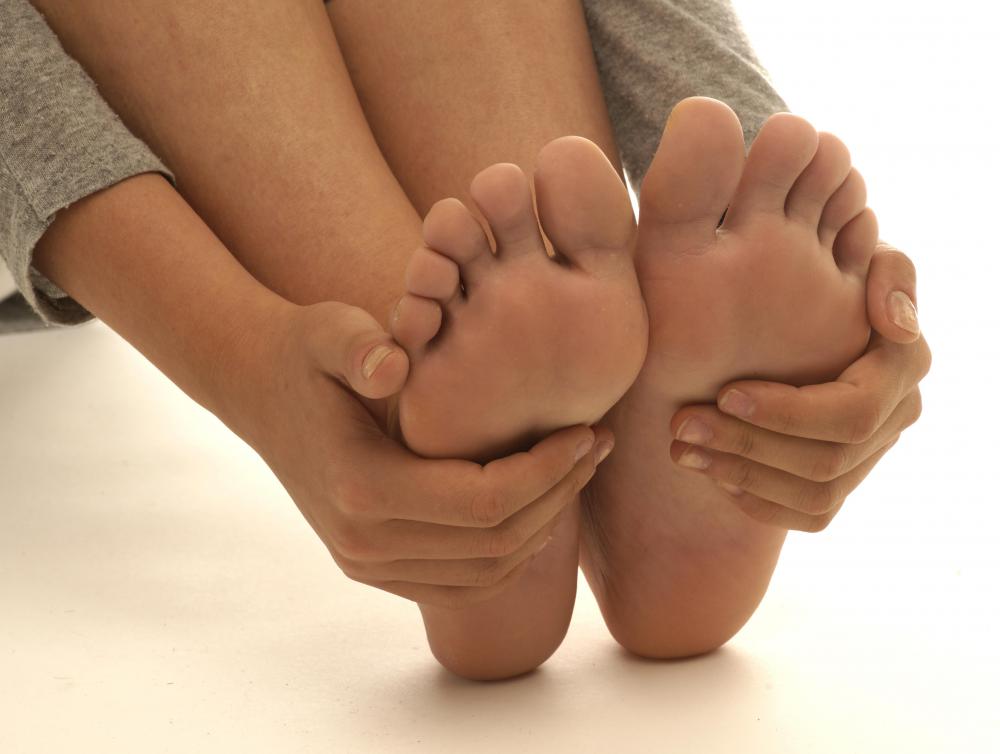At WiseGEEK, we're committed to delivering accurate, trustworthy information. Our expert-authored content is rigorously fact-checked and sourced from credible authorities. Discover how we uphold the highest standards in providing you with reliable knowledge.
What is the Flexor Hallucis Longus?
The flexor hallucis longus is a muscle of the posterior compartment of the lower leg. Situated deep in the calf alongside the flexor digitorum longus and the tibialis posterior, it is responsible for flexing or curling the big toe. It fairly centrally located on the back of the leg beneath the larger gastrocnemius and soleus muscles of the calf, though it is nearer to the lateral or fibula side of the leg, with its tendon crossing the ankle joint and running beneath the foot to the big toe. As such, this muscle is involved not only in flexing the big toe, known as the hallux, but of the ankle as well.
Originating about a third of the way down the posterior or rear aspect of the fibula bone, the flexor hallucis longus also finds its origins on the interosseous membrane, which divides the leg into its anterior and posterior compartments. Additionally, it arises from several fibrous tissues encasing nearby muscles, such as the fascia enveloping the tibialis posterior muscle situated just above in the calf. All of these fibers descend and converge to form a tendon. Like those of the flexor digitorum longus and tibialis posterior, this is a fairly large tendon that runs along most of the length of the muscle and then, after the muscle fibers taper off, crosses the ankle.

The tendon of the flexor hallucis longus passes obliquely behind the bottom of the tibia bone on the inner side of the ankle. It then runs between the talus bone of the ankle and, below it, the calcaneus or heel bone via a niche called the sustentaculum tali. Finally, it crosses the underside of the foot alongside the tendon of the flexor digitorum longus and attaches to the base of the distal phalanx of the big toe, the last bone in the hallux. This insertion point allows the flexor hallucis longus to act not only on the distal interphalangeal joint, or the last joint in the toe, but also on the metatarsophalangeal joint, the second joint in the toe, pulling downward on the distal phalanx to curl the entire toe.

In addition to this muscle’s action at the big toe, it is involved in plantarflexion of the entire foot at the ankle. Primarily the responsibility of the larger gastrocnemius and soleus muscles, plantarflexion is the action of pointing the foot downward at the ankle as seen in a dancer pointing her toes. The flexor hallucis longus, bigger and stronger than the adjacent tibialis posterior and flexor digitorum muscles, both of which also support ankle plantarflexion, is a secondary agent of this joint action.
AS FEATURED ON:
AS FEATURED ON:












Discuss this Article
Post your comments